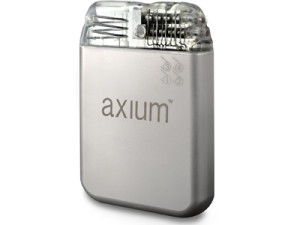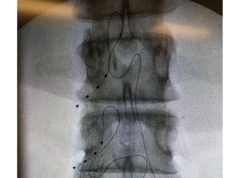
Recent research carried out by Huygen and colleagues in view to being published in Neuromodulation confirms that dorsal root ganglion (DRG) stimulation can significantly reduce the severity of patients’ pain and improve their quality of life through 12-months post-implant.
Technological advances have recently led to the development of a spinal cord stimulation system—that can specifically target the dorsal root ganglion (DRG) of the spinal level associated with the painful anatomic area—enabling treatment of chronic neuropathic pain.
In previous studies, DRG stimulation has been demonstrated to be safe and effective. A recent randomised, controlled, comparative effectiveness trial of DRG stimulation in patients with chronic neuropathic pain due to CRPS I and CRPS II found that DRG stimulation resulted in superior treatment success compared to tonic dorsal column stimulation at all follow-up assessments through 12 months.
Yet, research surrounding this mode of spinal cord stimulation system is still fresh. The authors write, “To further characterise outcomes, this report presents data from the first postmarket, prospective, observational clinical study of DRG stimulation.”
As the investigators aimed to provide real-world evidence for DRG stimulation, the inclusion criteria were particularly broad to emulate the typical clinical environment. Sixty-six patients were recruited (with an average age of 52 years ±11.5) from three investigators’ pain management practices in the Netherlands, during 2012 and 2013. Each patient had to have intractable pain for at least six months prior to the study, with a minimum baseline pain rating on 60mm on the VAS (visual analogue scale) in the primary region of pain.
Regarding the intervention itself, the Axium neurostimulation system (Abbott) was used to place electrodes at the target DRGs. At baseline, the regional distribution of each patients’s primary pain area, including intensity, was mapped. Measures of functioning, quality of life and mood were also assessed. Follow-ups were conducted at one, three, six and 12 months’ post-permanent implant; repeating baseline assessments and evaluating patients for any adverse events. Outcomes at the end of the trial stimulation period were quantified by the percentage change in the VAS scores relative to baseline, to assess the change from baseline to each follow-up visit.
Of the 66 subjects enrolled, failed back sur gery syndrome, peripheral nerve injury, and complex regional pain syndrome formed the lar gest aetiologies. Permanent implants were placed in 56 of the subjects (86.2% of those originally recruited).
After 12 months of treatment, the VAS scores indicated that average pain ratings in subjects’ primary area of pain decreased from 8.0cm at baseline to 4.1 (a mean percentage reduction of 48.8% (±3.27), and 49% of subjects had ≥50% reduction in pain.
Furthermore, functional capacity was increased, and mood and quality of life improved. Importantly, improvement in quality of life was sustained over time; with the EQ-5D index scores (ranging from 0 to 1.0) having increased from 0.36 at baseline to 0.62 at 12 months, therefore almost doubling the subject’s ratings. Additionally, no confirmed lead migrations were observed, and there was a low rate of infection.
In conclusion, the authors write: “These converging real-world clinical outcomes support the notion that DRG stimulation can provide safe and clinical significant pain relief.” Moving forward, the authors suggest how detailed quantitative and qualitative assessments may shed further light on the rehabilitative contribution of neuromodulaton and its personal impact. Additional investigation into partial responders to DRG stimulation is also necessary, as the mean reduction in pain score in this group never exceeded 30% in the current study.












